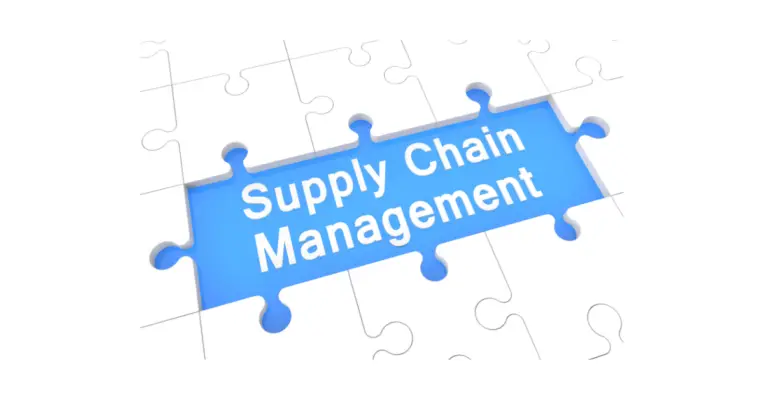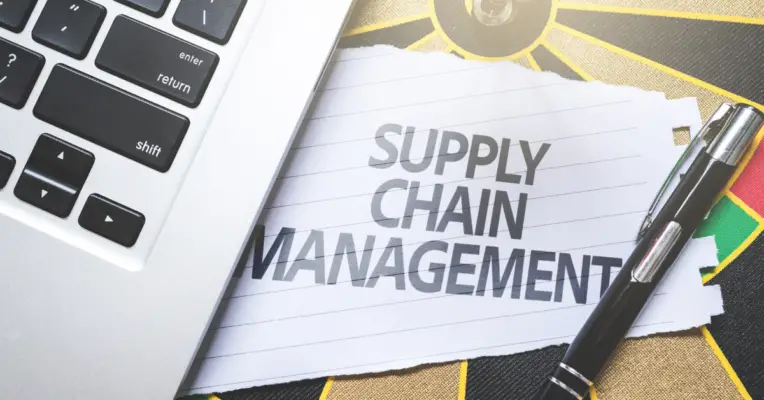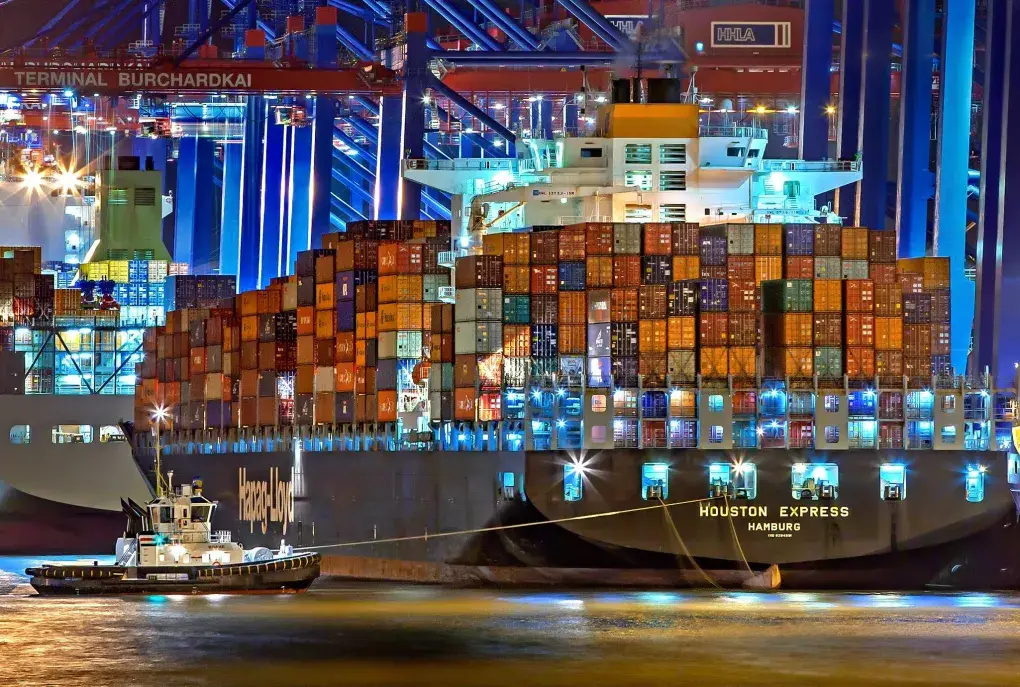As any business owner knows, the supply chain is essential to the success of any enterprise. The system delivers raw materials, components, and finished goods to customers. But the supply chain is also vulnerable to a variety of risks. These range from natural disasters to supplier failures to political instability. Managing supply chain risk is a critical part of any business operation. Here are some key tips:
–Diversify your supplier base: Don’t put all your eggs in one basket. Having multiple suppliers helps to mitigate the risk of any one supplier is unable to deliver.
–Build relationships: Good relationships with suppliers can help reduce the risk of disruptions. It’s also important to build relationships with other businesses in your supply chain, such as distributors and logistics providers. By working together, you can identify and resolve problems more quickly.
–Monitor conditions: Keeping tabs on conditions in your suppliers’ countries can help identify potential risks before they materialize. For example, if you know that a hurricane is headed for your supplier’s country, you can plan to source goods from another supplier in advance.
Following these tips can help minimize the impact of supply chain disruptions and keep your business running smoothly. Supply chain operations are susceptible to internal supply chain risks and business data.
Supply chain risk management, or SCRM, is defined as evaluating risk within a supply chain and its associated functions. Implementing a Global Supply Chain Risk Management Strategy can enhance customer satisfaction.
Supply chain management is the process of the transformation of raw materials consumed into a finished product. Specifically, sourcing, procurement, conversion, and logistics management are included in the plan and management.
Supply chain risk management is one of the most important aspects of any business. If something happens to disrupt the flow of goods and materials, it can have a devastating effect on the company. To mitigate these risks, businesses must implement effective strategies to protect their supply chains. This blog post will discuss some key strategies for managing supply chain risk.
What is Supplier Risk Management?
Supplier risk management is the process of assessing, monitoring, and addressing risks posed by suppliers. By understanding and managing supplier risks, organizations can protect themselves from potential disruptions to their supply chain.
A supply chain disruption at any point in the supply chain can significantly impact the business. As a result, supplier risk management has become essential to running a successful operation.
There are a variety of risks that can be associated with suppliers, including financial risks, delivery risks, quality risks, and compliance risks. To effectively manage supplier risk, organizations need to clearly understand their own supplier risk profile and the potential impacts of supplier disruptions.
They also need to put in place processes and systems to identify and address supplier risks in a timely manner.
Supplier risk management involves assessing, screening, and rating suppliers on their business and risk factors. It ends with a comprehensive supplier risk matrix identifying potential risks, the impact they may have on operations, and establishing a strategy for addressing and reducing potential suppliers’ risks.
Risk management is part of supplier management. Sometimes confused with supplier relationship management, risk management really is just the most basic form of how to manage supply chain risk.
Supply chain risk management is defined as when companies take strategic action across the supply chain to identify, evaluate and reduce risks across all aspects of the supply chain. External and internal risks disrupt your supply chain, so understanding the differences is helpful.

Supply Chain Risk Management Strategy
As the world becomes increasingly interconnected, businesses must pay close attention to their supply chains. A disruption at any point along the supply chain can have a ripple effect that impacts the entire system.
As a result, it is essential for businesses to have a robust risk management strategy in place. There are several steps that businesses can take to minimize the risks associated with their supply chains.
First, they can improve communication and coordination among all the stakeholders involved in the supply chain. This includes suppliers, manufacturers, distributors, and retailers. By establishing clear lines of communication, businesses can ensure that everyone is on the same page and that potential problems are quickly identified and addressed.
Second, businesses can create contingency plans<span< a=””> style=”font-weight: 400;”> for dealing with disruptions. This may include maintaining a cache of critical supplies or investing in alternative supplier relationships. By having a plan in place, </span<>businesses can minimize the impact of disruptions and get back up and running as quickly as possible.
Third, businesses can utilize technology to track inventory levels and shipments throughout the supply chain. This allows them to quickly identify potential problems and take corrective action before disruptions occur.
Supply chain risk management software is used to monitor supply chain sustainability. It is possible for them to reduce the time to purchase items and inventory by using these methods.
As the supply chain gets automated in more places, it becomes necessary to use Software to manage risks. Unfortunately, older technologies are not equipped to navigate the pace of technological advances.
How does AI fit into Supply Chain and Supplier Risk Management?
One of the most exciting applications of artificial intelligence (AI) is in the area of supply chain and supplier risk management. The goal of AI in this context is to help companies optimize their supply chains by reducing costs and improving efficiencies.
In particular, AI can identify supplier behavior patterns that may indicate financial or operational risks. Through predictive and prescriptive analytics, AI will analyze this data;
AI can help companies decide which suppliers to do business with and how to manage their relationships. Thus reducing supply chain costs and increasing the organization’s competitive advantage.
In addition, AI can also be used to monitor entire supply chain performance and compliance with regulations.
AI continues to evolve with constantly new applications appearing and increasing supply chain visibility.
AI has not become a mainstream procurement and supply chain technology but could benefit you as you rapidly and iteratively improve your external supply chain risks and internal processes, thereby increasing ROI.

Supplier Scorecards and Performance
A strategic supplier scorecard can be used as an effective tool. These metrics allow you to rank and group suppliers based on a core strategic set based on multiple factors. It’s no secret these tasks are extremely lengthy and change frequently.
Every day new information comes. New legislation is being passed, a new supplier is being introduced, and performance or quality problems appear.
Internal and external risks, known and unknown risks will go through a risk assessment exercise for risk identification. A risk-aware culture organization will have a risk management department that does risk analysis of a risk event.
Crisis management
Organizations should also learn about disruption and prepare for an efficient crisis management program. An effective crisis management program will improve supply chain resilience.
Medium-term
One of the most critical strategies to develop a successful response strategy is developing a more responsive strategy. This is true not only of agile decision-making when dealing with an evolving situation but also of the tools and programs used to implement these solutions.
At the end of the day, you should know what damage was caused and how to mitigate that, so you can know a fair amount about how long this could last. Adopting an agile approach is critical in making plans for the upcoming year to get you on the right track and reduce potential risk factors.
Short term
A quick response to crisis situations begins with setting expectations. Here, the procurement managers must set clear rules of operation and coordinate their team around common guidelines of risk exposure. In this way, the government can eliminate all unnecessary expenditures or off-contract buys and encourage the growth of savings.
These rules will vary based on the type of organization. We spoke to several smaller teams that responded with changes to approval regulations requiring all upcoming purchases from CFOs to be vetted immediately and create predictive financial stability for firms.
Long term
Long-term objectives associated with crisis management generally emerge when things stabilize, or there appears to be a clear path toward recovery. Then you can begin to plan for the next possible disruption.
It’s essential that you remove all information silos to achieve more transparency. With the latest, accurate information, you can quickly decide when an incident occurs, so this clear information is vital. There are countless ways to manage transparency and create processes and policies around data sharing and integrity of key suppliers.
Developing your own plan and leading from the top
Strong leaders are essential during crises. During the pandemic experts discussed the importance of procurement manager skill sets in the future. Those businesses that were agile were more capable of managing the shifting market.
The leader must develop and communicate a clear strategic plan covering business objectives for the immediate, short term, and long term to allow the procurement teams to act quickly. Third party suppliers who provide external data sources need to observe security controls mechanisms for multiple locations.
Adapting to your industry
There isn’t a universal crisis management system. If it happened, much more chaos would come when tragedy struck. Instead, it is important to look at your verticals and consider all aspects that may differ.
In COVID-19, medicine and pharmaceutical industries must respond differently to manufacturing and transportation. As your planning process develops, you should be aware of and keep your possibilities afloat despite the specific circumstances of supplier network. The procurement team must guide reputational risk by enabling business continuity of business operations.
Reviews
A crisis can be defined as a turning point or an unstable and dangerous situation that requires immediate action. Crisis management is the process of planning, coordinating, and executing the activities necessary to deal with a crisis.
There are four steps in the crisis management process:
- Pre-crisis: This phase involves identifying potential risks and developing plans and procedures to mitigate those risks.
- Crisis: This phase is characterized by chaos and uncertainty. It is important to maintain communication and follow the plan that has been put in place.
- Post-crisis: This phase is focused on recovery and evaluation. It is important to debrief after a crisis and learn from what went well and what could be improved for next time.
- Post-post-crisis: This phase is about returned to normalcy. It is important to keep an eye on potential risks and be prepared to deal with them if they arise again in the future.
Steps to Manage Supply Chain Risks
Any business that deals with the production, distribution, and sale of goods is subject to supply chain risks. These risks can come from a variety of sources, including weather events, political instability, and natural disasters. While it’s impossible to completely eliminate these risks, there are steps that businesses can take to manage them.
One way to manage supply chain risks is through insurance. Insuring against potential disruptions, businesses can protect themselves financially if their supply chain is disrupted. Another way to manage risk is through diversification.
Through having multiple suppliers for each component of their product, businesses can reduce the impact of any one supplier being disrupted. Finally, effective planning and communication can help businesses to quickly adapt when disruptions do occur.

Identify the problem
To identify risk, there must first be a good understanding of the risks associated with the supplier.
Establishing an individual risk scorecard will give you an idea of every element you consider important. After you decide the best way to monitor risks, you can then implement a system to keep track of your supply chain for the long term. This step requires an effective monitoring system.
Assess
Your risk data is no longer actionable now that your information is in the system. At this stage, the information is analyzed and assessed to reflect the potential risks that could arise. It is essential to focus on mitigation actions and the strategy to manage supply chain threats.
You must know the importance of your business and it is best to involve others to determine what risk is important for your enterprise. From that point, you can develop the risk evaluation matrix.
Mitigating
The ability to detect risk is great, but without minimizing risk, it’s a shame. The risk mitigation plan is divided into two sections: The first should be managed alongside your risk analysis.
You have the data coming in, and can start taking measures to reduce disruptions. This can also involve avoiding sole-sourcing events, expanding your supplier portfolio through geographical locations, or supporting or implementing your own processes.
Conclusion
In today’s global economy, managing supply chain risk is more important than ever. By taking steps to assess and mitigate the risks posed by your suppliers and other parts of your supply chain, you can protect your business from unforeseen disruptions. The benefits of doing so are clear – improved customer service, reduced costs, and increased profits.
Chris Ekai is a Risk Management expert with over 10 years of experience in the field. He has a Master’s degree in Risk Management from University of Portsmouth and is a CPA and Finance professional. He currently works as a Content Manager at Risk Publishing, writing about Enterprise Risk Management, Business Continuity Management and Project Management.

